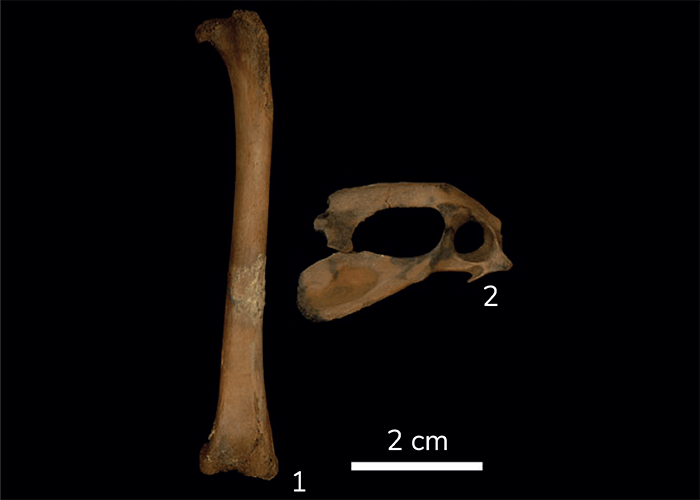Could mass spec identify cognitive dysfunction? With millions suffering from dementia worldwide – and with the number only predicted to rise – early diagnosis and intervention for individuals with cognitive dysfunction (CD) are vital, meaning that a brief and effective screening tool could be life-changing. And that’s why researchers have recently explored the potential of volatile organic compound (VOC) detection. Using high-pressure photon ionization time-of-flight mass spectrometry (HPPI-TOFMS), they were able to distinguish VOC patterns between CD and healthy groups – with 10 VOC ions showing significant differences.
The test of time. The ability to determine exactly when a bloodstain was deposited at the scene of a crime is invaluable information. And that’s why researchers at the Zurich Institute of Forensic Medicine, Switzerland, are using untargeted LC-MS-based metabolomics to estimate the time since deposition (TsD) of bloodstains. The bloodstain metabolome changed significantly with increasing TsD, with phenylalanyl alanine appearing to be a promising candidate biomarker. The authors also noted that the storage conditions significantly affected changes to the metabolome over time.
The metabolomics of ADHD. There is an increasing amount of evidence suggesting that there may be a link between gut microbiota and symptoms of ADHD. To explore this evidence further, researchers used using NMR spectroscopy and LC-MS to perform unbiased metabolomic profiling of urine and fecal samples collected from a Swedish twin cohort enriched for ADHD. Results revealed sex-specific patterns in the metabolic phenotype of individuals with ADHD: the urine profile of males with ADHD was characterized by greater excretion of hippurate, a product of microbial-host co-metabolism that can cross the blood-brain-barrier with bioactivity of potential relevance to ADHD. According to the authors, as we increase our knowledge of the effect of the microbiota-gut-brain axis in neurological disorders, microbiota will become an increasingly attractive target for neuropharmacological treatments.
Detecting SARS-CoV-2. Although RT-PCR tests are typically regarded as the gold standard for SARS-CoV-2 diagnosis, they do have limitations – namely, their inability to target multiple genes, limiting identification of SARS-CoV-2 variants. As such, in a recent study, researchers combined multiplex PCR with matrix-assisted laser desorption/ionization time-of-flight mass spectrometry (MALDI-TOF MS) for disease detection. According to the results, this method is highly sensitive and highly efficient for the detection of SARS-CoV-2 variants. However, the authors did note that the need for highly trained technicians for complicated manual tasks hinders its clinical application.

Extraction protocol for RNA-seq and metabolomic analysis promises more complete picture of cellular activity than either technique alone. Link
New machine learning tool dubbed CRANK-MS – aka Classification and Ranking Analysis using Neural network generates Knowledge from Mass Spectrometry – shows promise in detecting Parkinson’s disease years before first symptoms. Link
New technique – dubbed extractive-liquid sampling electron ionization-mass spectrometry (E-LEI-MS) – combines ambient sampling and EI-MS, allowing fast and reliable analyte identification. Link
Zooarchaeology by mass spectrometry (ZooMS) reveals that domestic chickens have been successively bred since the fourth and third century BCE in Japanese archipelago. Link
Using MC-ICP-MS, researchers may have identified new biomarker for early diagnosis and screening of autism spectrum disorder – noting significant alterations in blood metallome. Link
CREDIT: M Eda, H Izumi, and S Fujita, Front Earth Sci (2023)




